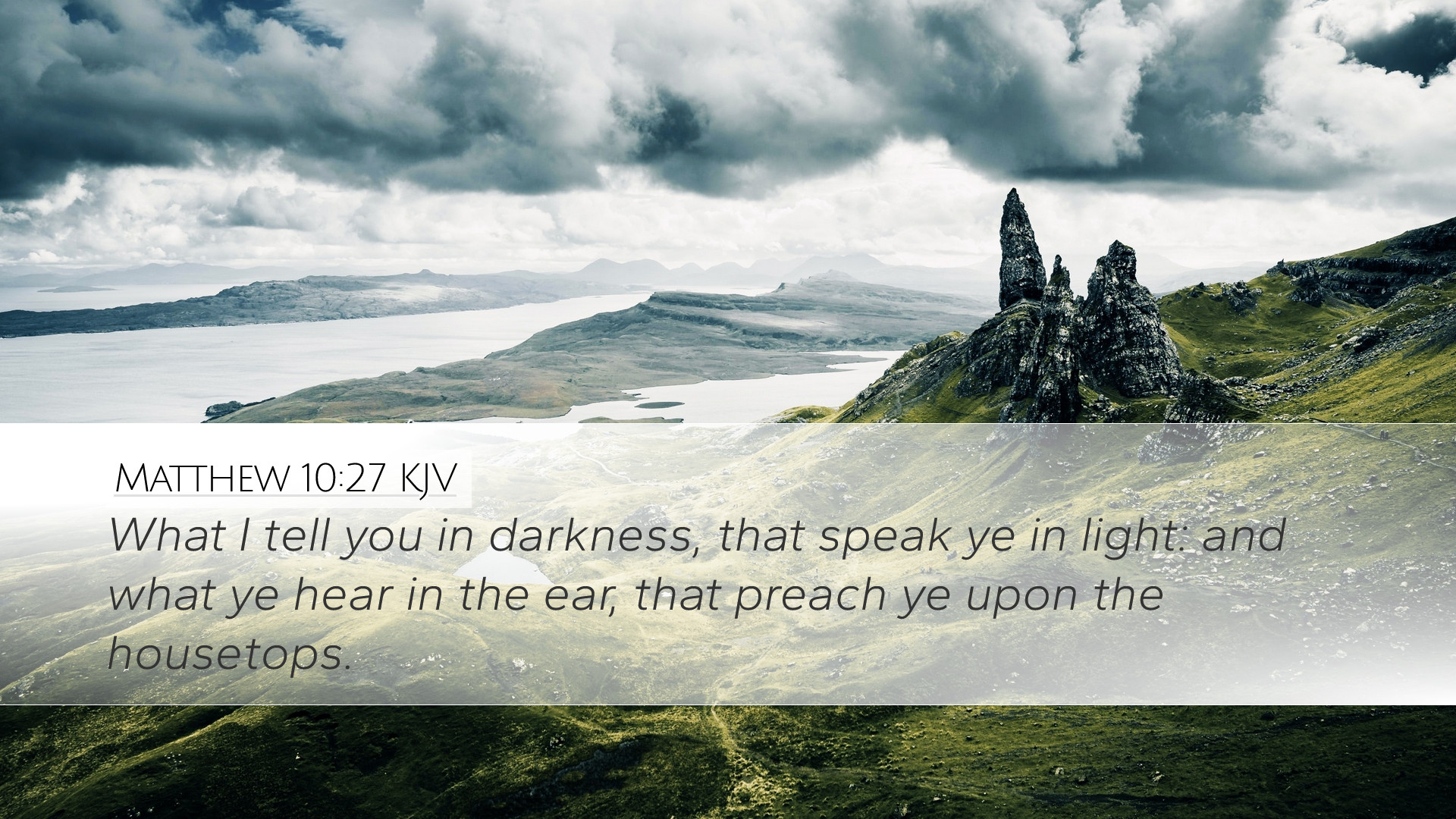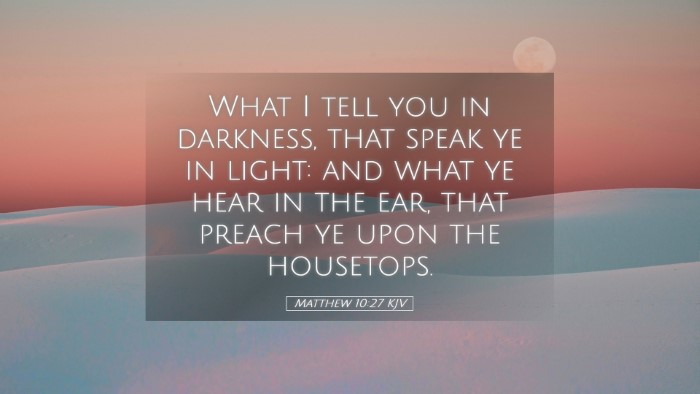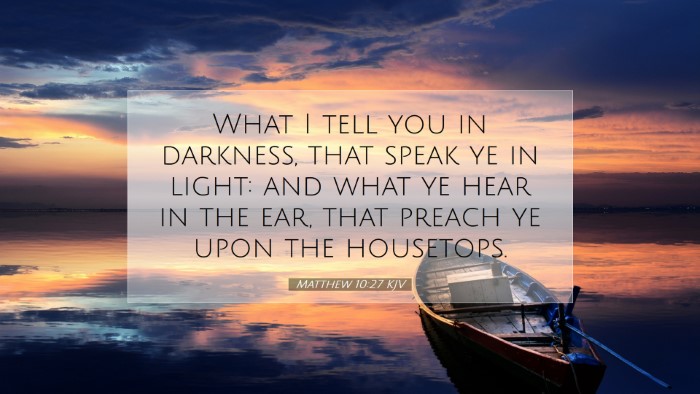Commentary on Matthew 10:27
Verse Citation: "What I tell you in darkness, that speak ye in light: and what ye hear in the ear, that preach ye upon the housetops."
Introduction
Matthew 10:27 is a significant verse that encapsulates the essence of the Christian mission and the dissemination of the gospel. Within it, we find an imperative for transparency and boldness in sharing the truths received from Christ. Drawing upon the insights of respected public domain commentaries—such as those by Matthew Henry, Albert Barnes, and Adam Clarke—we shall explore the depth of this verse to illuminate its applicability for pastors, students, theologians, and Bible scholars.
Contextual Analysis
This verse is part of a broader discourse where Jesus equips His disciples for their mission. The chapter depicts Jesus sending His disciples to evangelize the Israelites, as well as warning them of the challenges they would face.
- Historical Context: In the ancient world, the act of speaking in public, particularly from rooftops, indicated the urgency and importance of the message. Roofs were flat and often served as platforms for announcements.
- Spiritual Context: The darkness mentioned signifies the lack of understanding and the prevailing ignorance of spiritual truths within humanity. Jesus contrasts this with light, which represents revelation and divine truth.
Exegesis of Key Components
What I Tell You in Darkness
Albert Barnes elaborates that the "darkness" reflects the times when Jesus imparted wisdom privately to His disciples. This signifies that there are teachings that require a deeper understanding and contemplation, often provided away from the public eye. These teachings must be gleaned through prayer, reflection, and intimacy with Christ.
Speak Ye in Light
Matthew Henry comments on the transformation of knowledge from secluded understanding to public declaration. The transition from darkness to light is a core principle in Christian witness—the calling to make known the hidden truths of the Gospel. It underscores the duty of believers to not keep their faith private but to share it openly.
What Ye Hear in the Ear
Adam Clarke emphasizes the personal and intimate nature of Christ’s teachings, as He speaks "in the ear." This signifies a direct and individual communication from Christ to each believer. It indicates that faith is intrinsically personal but meant to be expressed publicly in the haste of evangelism.
Preach Ye Upon the Housetops
The exhortation to "preach upon the housetops" signifies an unashamed proclamation of the gospel. Barnes notes that this represents the ultimate obedience to Christ’s call—to boldly declare His messages irrespective of any societal opposition or personal consequence.
Theological Implications
This verse carries profound theological implications: it embodies the tension between personal faith and public witness. As Matthew Henry astutely notes, Christians are entrusted with the sacred responsibility of proclaiming God's mysteries. The balance between private insights and public proclamations is crucial for effective ministry.
- Revelation and Responsibility: The knowledge gained in private encounters with Jesus is critical but is not meant to be hoarded. Believers are to share their revelations and transformative experiences with others.
- Faithfulness in Witness: The context of persecution that follows this chapter emphasizes the necessity of steadfastness in sharing one's faith, even in adversity.
Practical Applications
For pastors, students, and theologians, this verse serves as a powerful reminder of the mission and methodology of evangelism:
- Evangelism: Engage in evangelistic efforts, drawing from personal experiences and insights gained through relationship with Christ to affectively share the Gospel.
- Teaching: Educate congregants on the importance of both personal faith and communal sharing, encouraging them to take ownership of their witness.
- Encouragement: Assist those who may feel intimidated by the call to speak publicly by affirming the value of their personal transformation and the understanding it brings.
Conclusion
Matthew 10:27 not only highlights Jesus’ directive to His disciples but resonates through the centuries to contemporary believers who yearn to share the light of Christ. By weaving together insights from various public domain commentaries, we see that this verse challenges us to embrace our roles as faithful witnesses, urging us to carry out our calling fearlessly and faithfully in both private spheres and the public arena.


